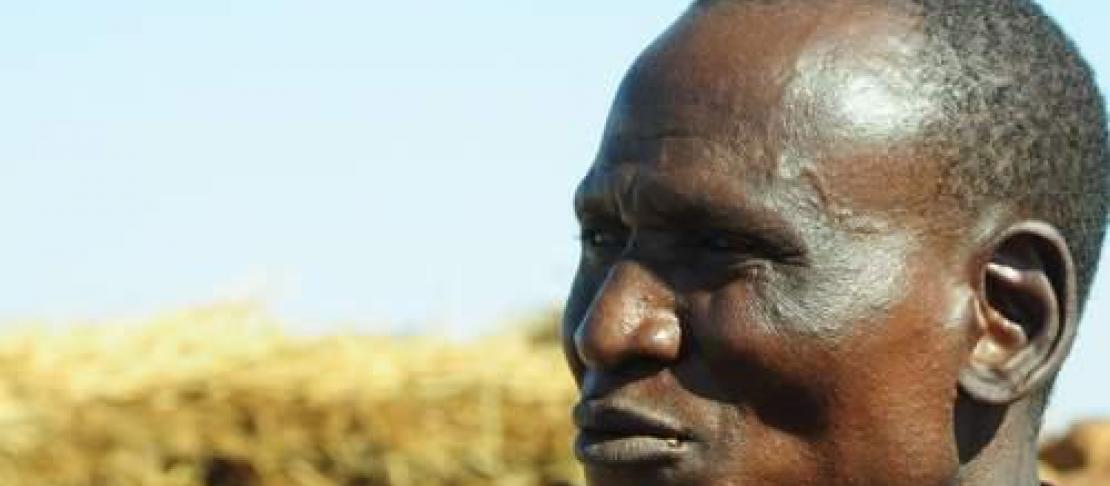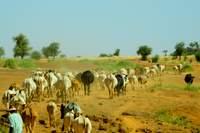Ninigui: A war against… erosion and desertification. - Part III: Ousseni combines farming and cattle herding

“You have no idea”, says Ganame Ousseni, a cattle farmer in Ninigui in the North of Burkina Faso, “You can not imagine. When I was a small boy, the grass was this high”, and he holds his arm above his head. “We used to hunt wild animals here. We had loads of cattle too.”
But now it is gone. The forest and the grazing grounds. The whole area is barren with a compacted crust as top soil. “What were we to do?”, Ousseni shakes his head, “We had to stay here to mind the crops, so we gave our cattle to nomads passing through. They herded them for us, taking the cows to the grazing grounds hundreds of miles away, all the way up to Mali. At the end of the dry season, when the cattle came back from the migration, we saw we lost more cattle each year. Some were stolen along the way, or were eaten by wild animals. Our herd disseminated. ”
 “Remember when Adama told you how we learned to build small dams to stop the water from eroding the soil, and we started to have better crops? Well, the technicians from the farmers’ union also taught us how to use the stover to feed our animals. Ha, we went into the recycling business! We used our crops not only for the grain, but reused the stems and leaves.”, Ousseni smiles.
“Remember when Adama told you how we learned to build small dams to stop the water from eroding the soil, and we started to have better crops? Well, the technicians from the farmers’ union also taught us how to use the stover to feed our animals. Ha, we went into the recycling business! We used our crops not only for the grain, but reused the stems and leaves.”, Ousseni smiles.
Years ago, when the forest and grass were plentiful, the stover from millet and sorghum were left on the fields. But now they are carefully stowing it as animal feed, to be used during the dry season.
Even though part of the herd is still migrating with the nomads, they can now keep larger parts in corrals. “We feed them the stover, so they grow fatter, and we can sell them.”, explains Ousseni.
Keeping the cattle in more confined areas allows farmers like Ousseni to also collect the faeces easily. “The technicians taught us how to make good compost, using cow faeces. We mix it with left-overs from the households”, he explains, showing a 20 by 30 foot square next to his corral. “This compost pit is about five foot deep. The compost at the bottom is ready to be used in the next rainy season. It is a simple technique. Just keep on stacking faeces and leaves on the top, and by the time the compost reaches the bottom, it is ready to be used as a fertilizer.”
During this trip where we took testimonials from farmers, it became almost a mantra from the farmers battling the climate change: “As the world changes, as the weather is changing, we, as farmers, also have to change”, Ousseni says, “In the past, a farmer was a farmer, and a cattle herder was a cattle herder. But now everyone combines cattle and crops. We have seen how the two can complement each other. Stover gives us healthy and fat cows. The faeces give us good compost, and thus a good harvest.”
The way ahead for researchers and smallholder farmers facing current and coming challenges posed by climate change lies in learning from each other while sharing knowledge and experiences.
Photos in this article by Peter Casier.


